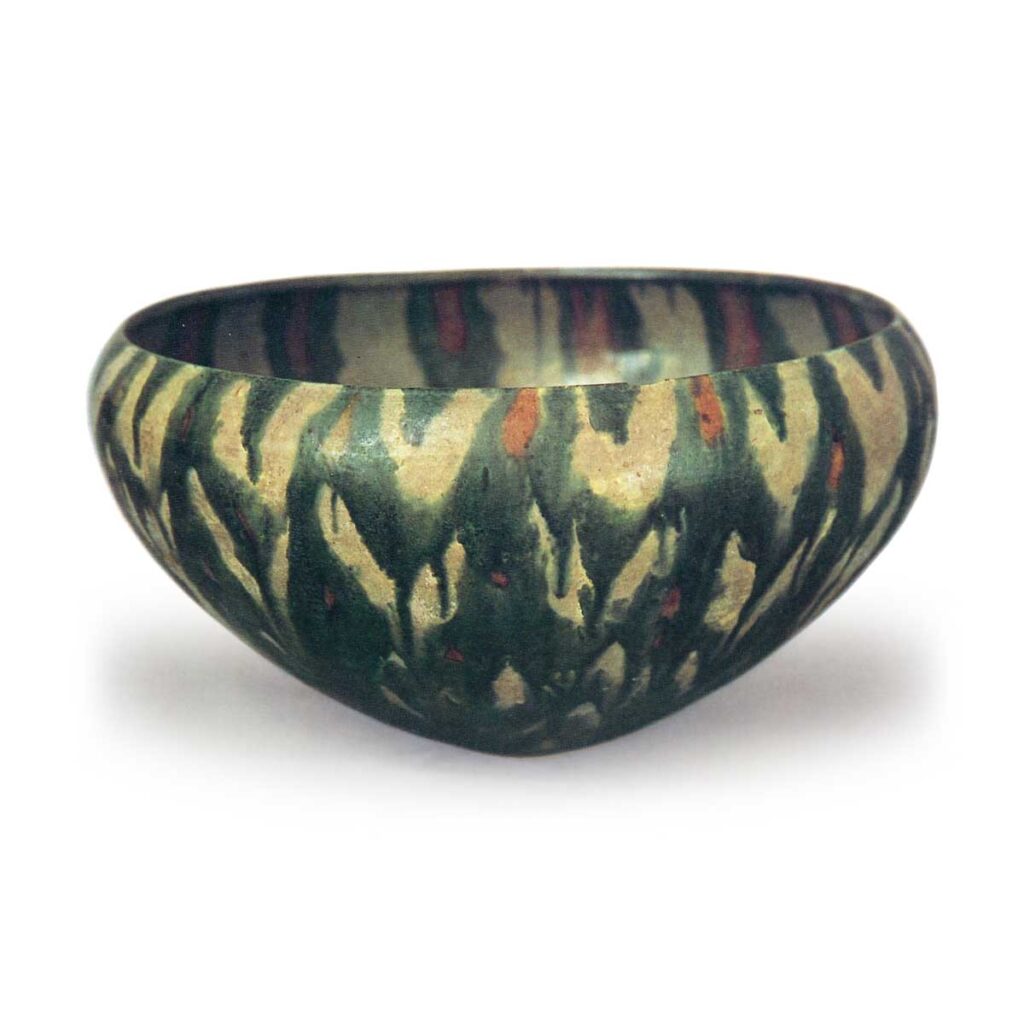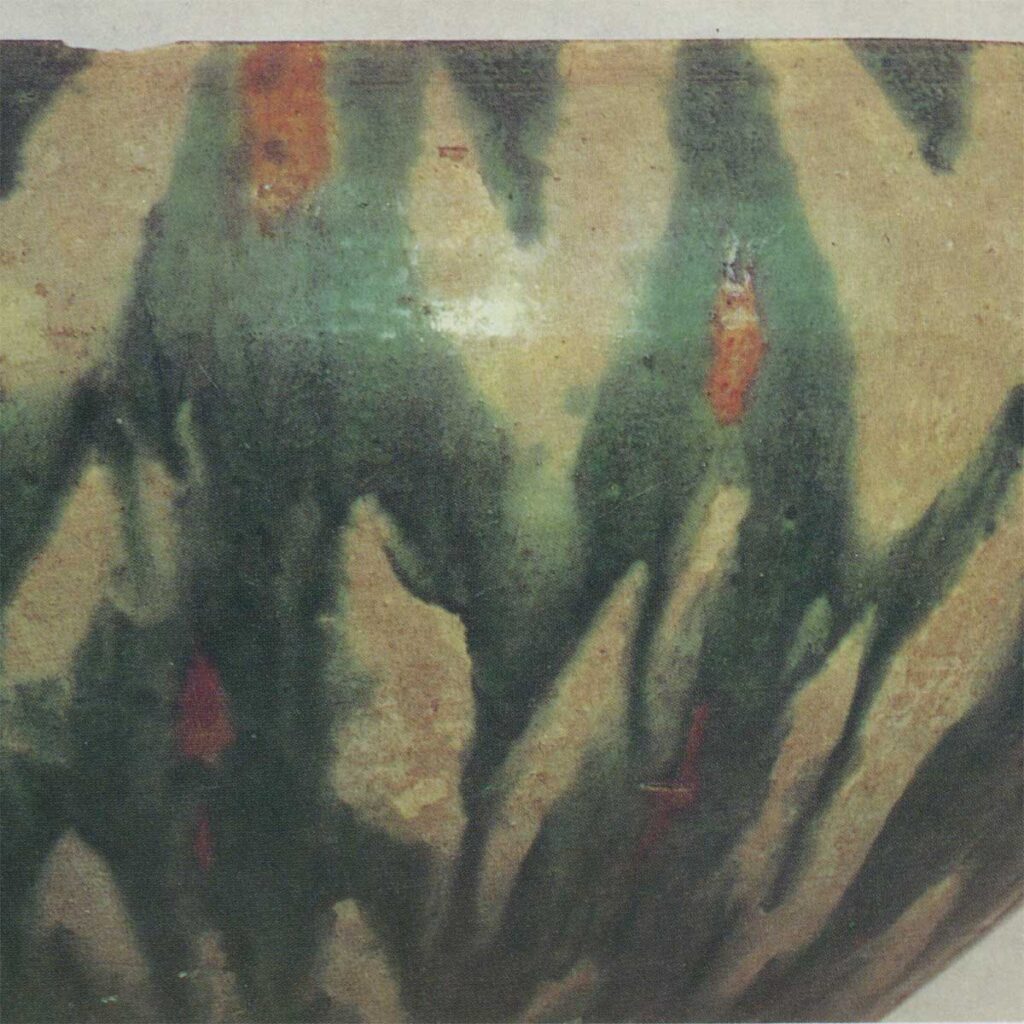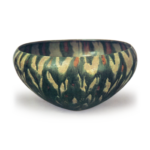

Three-color glazed ware: bowl.
8th century
Height 16.0 cm, mouth diameter 26.9 cm, body diameter 29.4 cm
Shosoin
This is the most numerous of the Shosoin Sansai bowls, along with a large dish, but of the two Sansai bowls, this is the only one with Sansai glaze on both the interior and exterior surfaces. This bowl is also the largest of its kind, but it is lighter in weight than the other bowls and is an exquisite work made thin by wheel-thinning the exterior surface. The glaze is made by first drawing a three-tiered arc pattern in green glaze from the mouth rim to the bottom, filling in the interstices with ash glaze, and then regularly arranging yellow glaze at the juncture of the green glaze. The inner surface is covered with a double mottled pattern of elongated yellow-green on a white ground at regular intervals from the mouth rim to about two thirds of the vessel’s surface. It was fired at a high, slightly reducing fire temperature, and the white glaze has many so-called “gohon,” or “motifs” on the surface.
Sansai pots have only been known to have been excavated from the Heijo Palace site outside of Shosoin, but recently they have been found with many green-glazed pottery shards at a village site bordering the Joso Kokubunji site in Chiba Prefecture.








